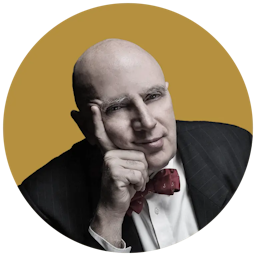Two Sides of Nat King Cole
This article is from the archive of The New York Sun before the launch of its new website in 2022. The Sun has neither altered nor updated such articles but will seek to correct any errors, mis-categorizations or other problems introduced during transfer.

“I still find it hard to believe,” Bill Charlap told me last week, “that most people don’t realize what an essential pianist Nat King Cole was. They don’t know that Nat was one of the greatest pianists in the history of jazz.”
Most general listeners who remember Cole played the piano at all think of him as, at best, a singer-pianist who could accompany himself brilliantly – like Bobby Short. But he was much more, and Mr. Charlap will try to make that case at a concert at the 92nd Street Y this Thursday costarring Cole’s highly accomplished younger brother Freddy.
“He was such a hugely popular star, and if he hadn’t played he would still be a cultural icon,” he said. “But the converse is true also: If Nat had never sung, he would still be remembered as one of the greatest pianists in the history of jazz.”
Cole was an important transitional figure in American popular music in several ways. His switch from jazz pianist to pop singer followed the trail blazed by Louis Armstrong and Fats Waller as he went from the cutting edge to the mainstream.
Like Armstrong, he could do plenty with a great Broadway-born standard by George Gershwin or Cole Porter. Yet he made equally marvelous music with the most minimal bread-andbutter Tin Pan Alley tunes. Unforgettable himself, many of his songs were eminently forgettable. Still, Cole could make any tune sound good, from Billy Strayhorn’s sophisticated “Lush Life” to something as banal as “Rambling Rose.”
What applied to individual songs also held true for entire genres of music. As an instrumentalist, he played everything from the most fundamental blues to the most complex, semi-classical mood piece. As a singer, he explored every genre from mainstream pop and jazz to gospel, Latin, and country and western music. The boundaries of Cole’s music expanded in proportion to his fame, as he rose from beer joints (in godforsaken Los Angeles, no less) to international celebrity.
Like many fans, Mr. Charlap first heard Cole as singer – in his case on a 45-inch single his parents (the singer Sandy Stewart and the Broadway composer Moose Charlap) owned of his premiere version of “Lush Life.” “Of course that completely turned me on,” he said, “because it’s got that great, innovative arrangement by Pete Rugolo as well as the beauty of Nat Cole.”
Only later did he discover the master musician. “I first really became aware of him as a pianist on some trio things that I had bought on a bootleg cassette at the Strand Bookstore, when I was about 11 or so,” he recalled. “Hearing him on things like ‘Sweet Lorraine’ that caught my ear right away, hearing him even on those things that were not strictly instrumentals.”
As a pianist, Cole played an essential part in the transition from swing to bebop that occurred during the height of his trio in World War II.” He is essentially a linear player, said Mr. Charlap, as opposed to a harmonic one. “He comes out of Earl Hines and Teddy Wilson, and even Art Tatum, but his linear language is a lot more streamlined and closer to the modern era. When I hear Nat, I hear foreshadowings of Oscar Peterson and the whole Detroit school of pianists, especially Tommy [Flanagan] and Hank [Jones].”
For all of his technique, however, Cole was a simple player, just as he was a simple singer. He and Sinatra were the two most important male vocalists of mid-century (after Bing and before Elvis). Yet what made Cole so effective as a singer is the same thing that made him different from Sinatra: Cole was an idealist, Sinatra a realist.
A Sinatra love song is either the heights of rapture or the depths of despair. Cole sings “Love Is the Thing” – a grand emotion, a relationship that ennobles us. Being in love, the way Cole sings about it, is more important than being rich or poor, beggar or king. To me, Sinatra’s 1959 album “Nice ‘n’ Easy” is his answer to Cole’s style of optimistic love songs, and Cole’s 1962 “Where Did Everyone Go?” is Cole’s version of the classic Sinatra suicidal saloon songs.
In his tribute program, Mr. Charlap has strived to be true to Cole’s own eclectic tastes. “He had such a vast repertoire, I love everything from ‘Straighten Up and Fly Right’ to ‘Send for Me,’ to the album with George Shearing – I’m crazy about that – to ‘Nat King Cole at the Sands.’ It’s all good. He didn’t seem capable of bad taste.”
Thursday’s show features two stars, Freddy Cole and Mr. Charlap, in two settings. The first half will reflect Cole’s grounding in small groups and chamber jazz: We will hear Mr. Cole and Mr. Charlap with their long-standing trio and quartet (I’m especially looking forward to hearing Mr. Charlap recreating some of the actual King Cole Trio instrumentals of 60 years ago with James Chirillo on guitar and Ben Wolfe on bass). For the second half, both performers will work with drummer Dennis Mackrel’s big band.
Being kissed by Nat King Cole is a key part of the fantasy life of Tony Kushner’s heroine in “Caroline or Change.” For me, just listening to his music is enough.

